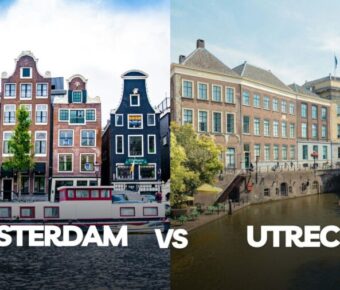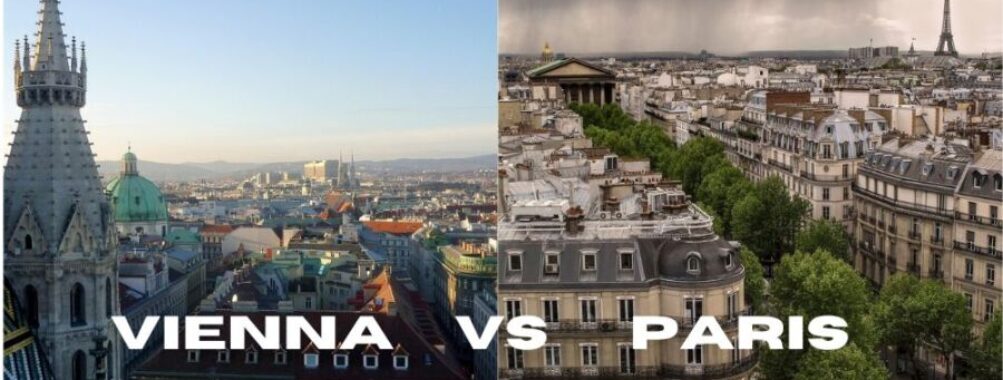
Vienna vs Paris: Which European Capital Reigns Supreme for Culture Lovers?
Vienna and Paris are two of Europe’s most captivating cities. Both offer rich history, stunning architecture, and world-class culture. But which one should you visit? The answer depends on what you’re looking for in a trip.
Vienna charms visitors with its imperial grandeur and musical legacy. The city’s coffee houses and classical concerts make it perfect for a refined getaway. Paris, on the other hand, is the quintessential romantic destination. Its iconic landmarks, fashion scene, and gourmet cuisine draw millions each year.
When it comes to weather, Vienna often has more sunny days in spring. It gets about 30 more hours of sunshine than Paris in April. Rain is similar in both cities during this time. Your choice might come down to whether you prefer schnitzel or croissants, waltzes or can-can dances.
Contents
- Historical Context and Cultural Heritage
- Architectural Marvels
- Museum Highlights
- Cityscape and Landmarks
- Vienna’s Iconic Ringstrasse
- Paris and the Eiffel Tower
- Lifestyle and Local Experiences
- Walkability and Exploration
- Local Restaurants and Cuisine
- Shopping and Markets
- Cost of Living and Travel Budget
- Accommodation and Rent
- Dining and Entertainment
- Public Transportation Affordability
- Seasonal Considerations
- Weather Patterns
- Best Time to Visit
- Culinary Traditions and Offerings
- Signature Dishes
- Local Wine and Beverages
- Accessibility and Transportation
- Metro System and Public Transit
- Convenience for Travelers
- Travel Style and Personal Preferences
- Solo vs Group Travel
- Leisure vs Adventure
- Nearby Attractions and Day Trips
- Excursions from Vienna
- Parisian Outskirts and Beyond
- Frequently Asked Questions
- What are the distinctive cultural experiences that differentiate Vienna from Paris?
- How does the cost of living compare between Vienna and Paris for a traveler?
- What architectural features set Vienna apart from Paris in terms of historical significance?
- When considering a visit to either Vienna or Paris, which city offers more unique attractions?
- How do the culinary experiences in Vienna and Paris contrast for food enthusiasts?
- In terms of overall ambiance and local charm, how do Vienna and Paris differ for a first-time visitor?
- More Travel Guides
Historical Context and Cultural Heritage
Vienna and Paris both boast rich histories and stunning cultural treasures. These cities have shaped European art, politics, and thought for centuries, leaving behind incredible legacies for visitors to explore today.
Architectural Marvels
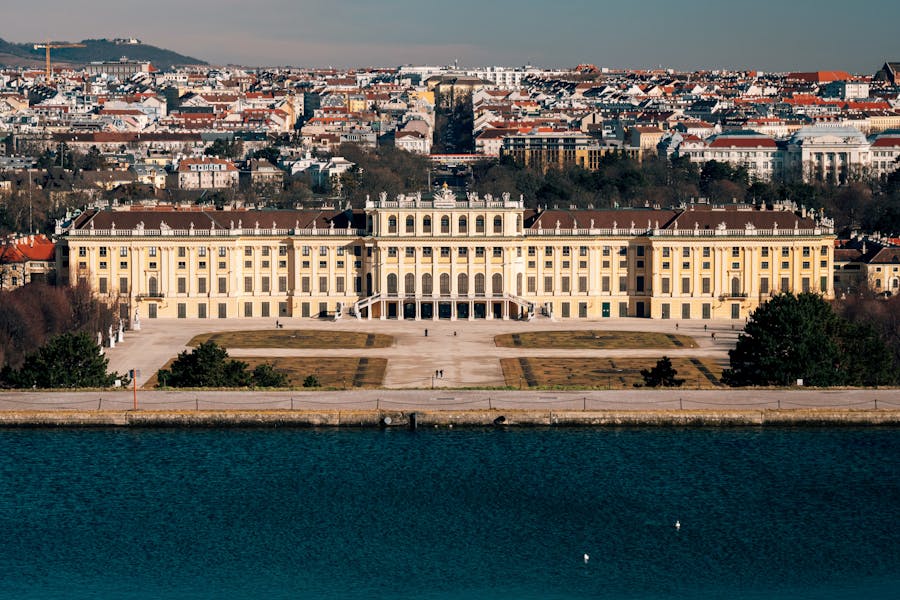
Vienna’s skyline gleams with Baroque beauty. The Schönbrunn Palace dazzles with its golden facade and sprawling gardens. St. Stephen’s Cathedral towers over the city center, its Gothic spire reaching for the heavens. The Belvedere’s elegant curves house priceless art collections.
Paris counters with icons of its own. The Eiffel Tower needs no introduction, its iron lattice an enduring symbol of the City of Light. Notre-Dame Cathedral, though damaged by fire, still inspires awe with its flying buttresses and gargoyles. The Arc de Triomphe stands proud at the end of the Champs-Élysées.
Museum Highlights
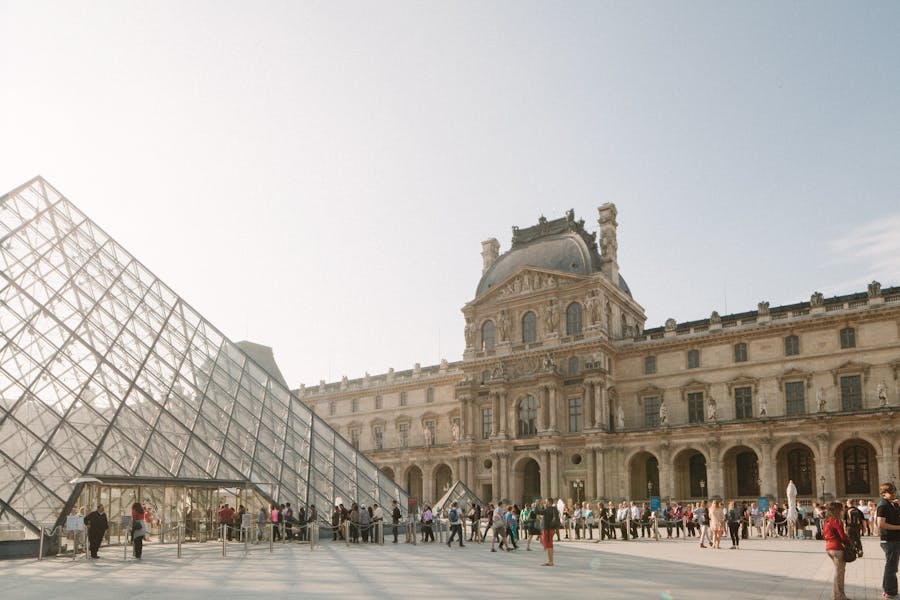
Vienna’s Kunsthistorisches Museum is a treasure trove of art history. Its halls overflow with masterpieces by Bruegel, Raphael, and Vermeer. The Leopold Museum spotlights Austrian artists like Klimt and Schiele.
The Louvre in Paris is the world’s largest art museum. The Mona Lisa’s enigmatic smile draws crowds, but countless other wonders await. Musée d’Orsay houses an unmatched collection of Impressionist works in a converted train station.
Both cities offer free museum nights, making culture accessible to all. Art lovers could spend weeks exploring without seeing it all.
Cityscape and Landmarks
Vienna and Paris boast iconic cityscapes that capture the imagination. Both cities have distinct architectural styles and world-famous landmarks that define their unique characters.
Vienna’s Iconic Ringstrasse

The Ringstrasse is Vienna’s grand boulevard that circles the city center. This elegant street showcases stunning 19th-century architecture. Impressive buildings line the ring, including the Vienna State Opera and the Parliament.
The Hofburg Palace sits near the Ringstrasse. This massive complex was home to Austria’s rulers for centuries. Today, it houses museums and government offices.
St. Stephen’s Cathedral is another key landmark. Its tall spire dominates Vienna’s skyline. The cathedral’s colorful tiled roof is a city symbol.
Just outside the city center lies Schönbrunn Palace. This baroque summer residence of the Habsburgs has 1,441 rooms. Its manicured gardens are a UNESCO World Heritage site.
Paris and the Eiffel Tower
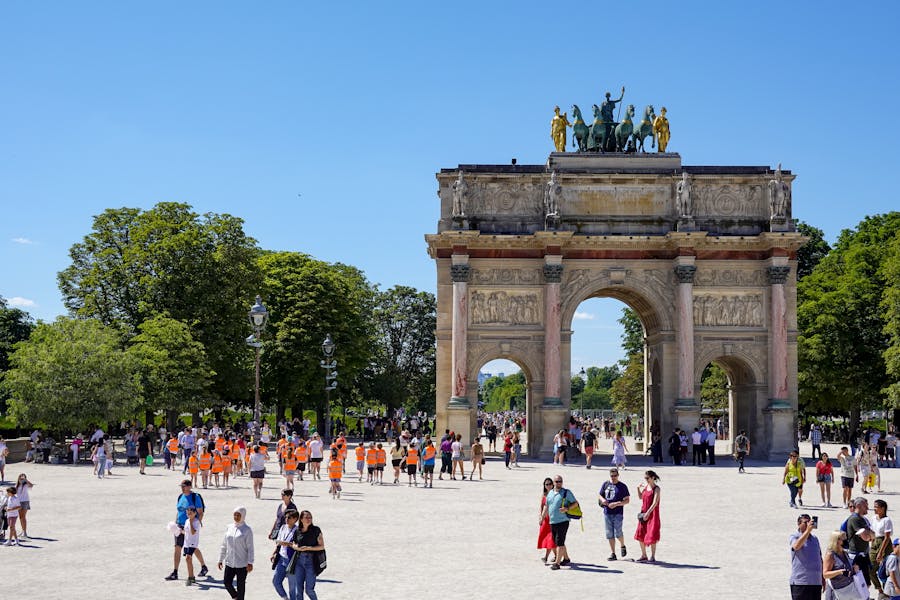
The Eiffel Tower is Paris’s most famous landmark. This iron lattice tower stands 324 meters tall. It was built for the 1889 World’s Fair. Visitors can climb or ride elevators to viewing platforms for panoramic city views.
The Arc de Triomphe is another iconic monument. It honors those who fought for France. The arch stands at the center of a star-shaped intersection with 12 radiating avenues.
Notre-Dame Cathedral is a masterpiece of French Gothic architecture. A 2019 fire damaged the roof and spire. Restoration work continues to bring this beloved landmark back to its former glory.
The Louvre Museum is home to countless artistic treasures. Its glass pyramid entrance has become a modern symbol of Paris. The museum houses famous works like the Mona Lisa.
Lifestyle and Local Experiences
Vienna and Paris offer unique ways to experience daily life and culture. Both cities have their own charms when it comes to exploring neighborhoods, trying local food, and discovering hidden gems.
Walkability and Exploration
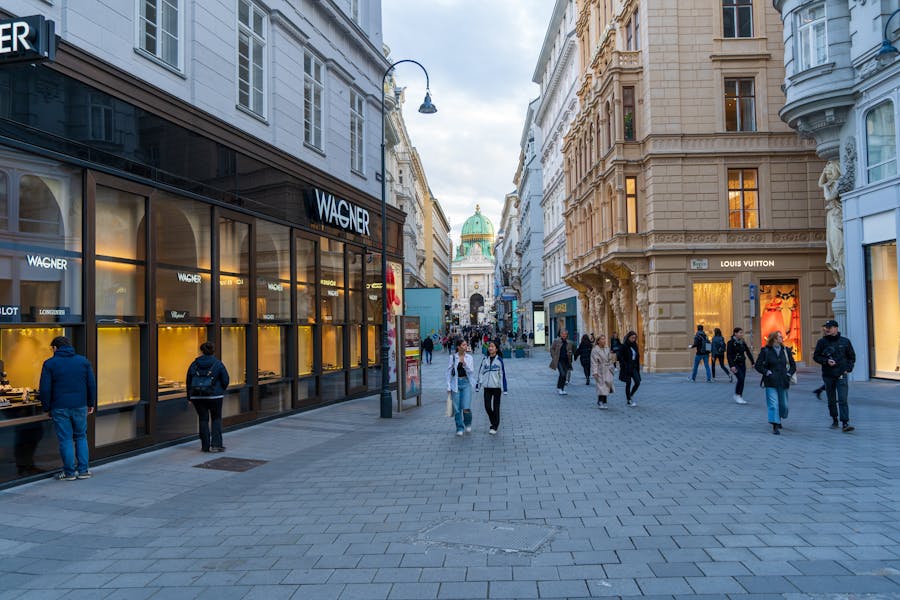
Vienna’s compact city center makes it easy to get around on foot. The Ringstrasse, a circular boulevard, lets you stroll past many famous sights. Cozy coffee houses dot the streets, perfect for a break between sightseeing.
Paris is bigger, but each neighborhood feels like its own little village. The Metro makes it simple to hop between areas. Wander through the charming Marais or along the Seine River for a taste of Parisian life.
Both cities have great public transport. Vienna’s trams add a nostalgic touch, while Paris has its iconic Metro stations. Bike-sharing is popular in both places for a fun way to explore.
Local Restaurants and Cuisine
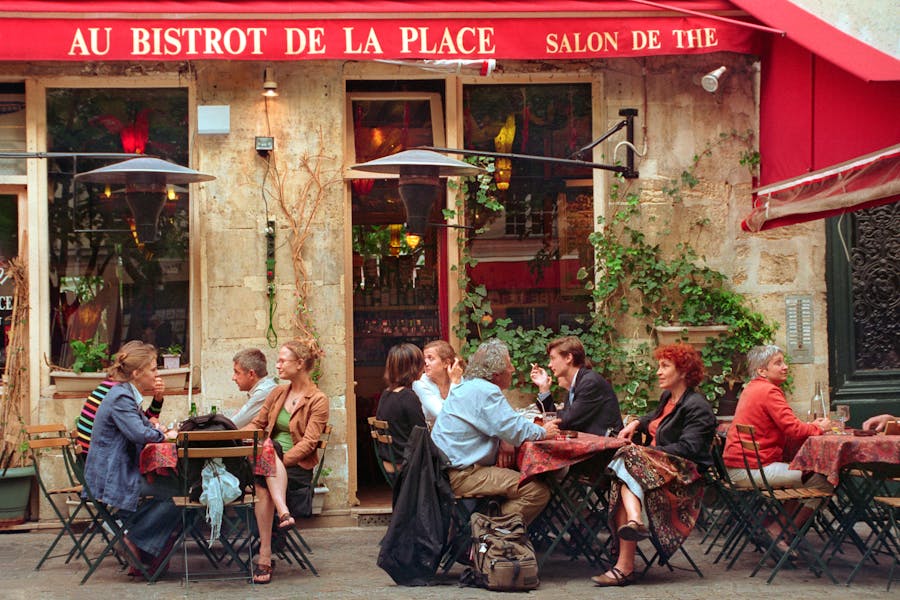
Vienna’s food scene blends tradition with modern twists. Try classics like Wiener Schnitzel or Sachertorte at historic cafes. The Naschmarkt is a must-visit for foodies, with stalls selling local and international treats.
Paris is a food lover’s dream. From tiny bistros to Michelin-starred spots, there’s something for every taste and budget. Don’t miss fresh croissants from a local bakery or a picnic in the park with cheese and wine.
Street food is gaining popularity in both cities. Vienna has sausage stands, while Paris offers amazing crepes. For a special night out, both cities have plenty of romantic riverside restaurants.
Shopping and Markets
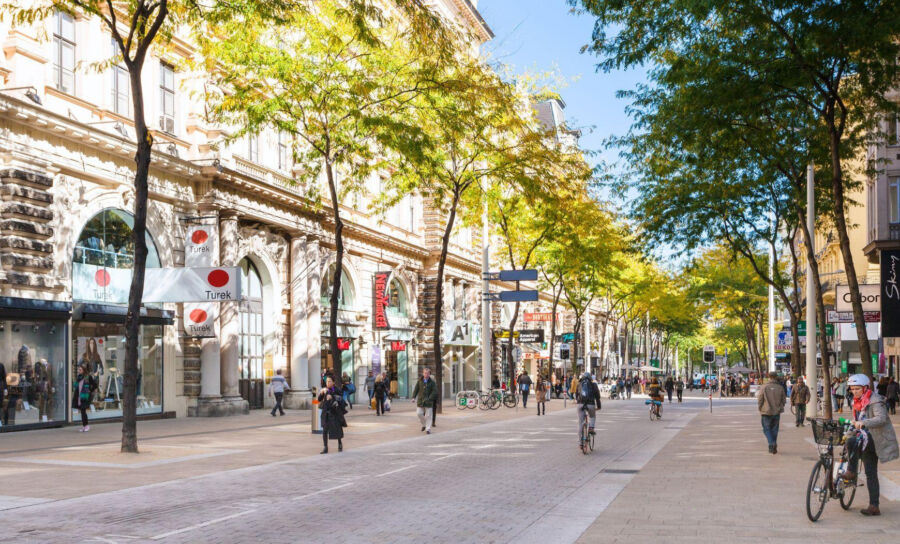
Vienna’s main shopping street, Mariahilfer Strasse, has big brands and local shops. For unique finds, check out the Spittelberg quarter with its artisan boutiques. The Naschmarkt doubles as a flea market on Saturdays.
Paris is famous for shopping. Browse high-end stores on the Champs-Élysées or hunt for vintage treasures in Le Marais. The city’s covered passages offer a charming shopping experience protected from the weather.
Both cities shine when it comes to markets. Vienna’s Christmas markets are magical in winter. Paris has great food markets like Rue Mouffetard and the Bastille market. These spots let you shop like a local and sample regional specialties.
Cost of Living and Travel Budget
Paris and Vienna are both popular European destinations, but they differ quite a bit when it comes to expenses. Let’s break down the costs you can expect in each city.
Accommodation and Rent
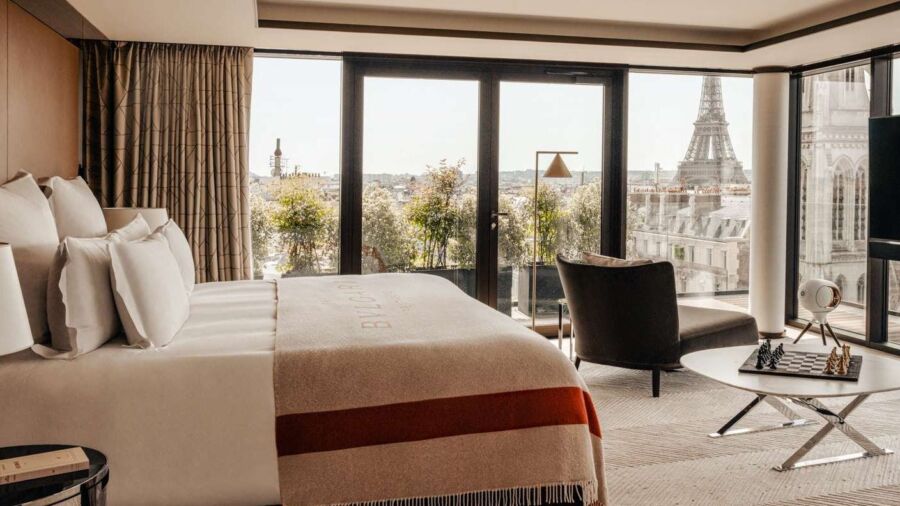
Finding a place to stay is often the biggest expense when traveling. Paris is generally pricier than Vienna for both short-term and long-term stays. A basic hotel room in Paris might set you back €100-150 per night, while a similar room in Vienna could cost €70-120.
For longer stays, renting an apartment is often more budget-friendly. In Paris, a one-bedroom flat in a decent area starts around €1,200 per month. Vienna is more wallet-friendly, with similar apartments going for about €800-1,000 monthly.
Students and budget travelers can save by staying in hostels. Expect to pay €25-40 per night for a dorm bed in Paris, compared to €15-30 in Vienna.
Dining and Entertainment

Food and fun are big parts of any trip. Paris is known for its amazing restaurants, but they can be pricey. A nice dinner for two in Paris might cost €80-120, while Vienna offers similar quality meals for €60-90.
For cheaper eats, Paris has great street food and bakeries. A tasty baguette sandwich costs about €5-7. Vienna’s famous sausage stands offer filling snacks for €3-5.
Museums and attractions are must-sees in both cities. The Louvre in Paris charges about €17 for entry, while Vienna’s top museums like the Kunsthistorisches cost around €16.
Public Transportation Affordability
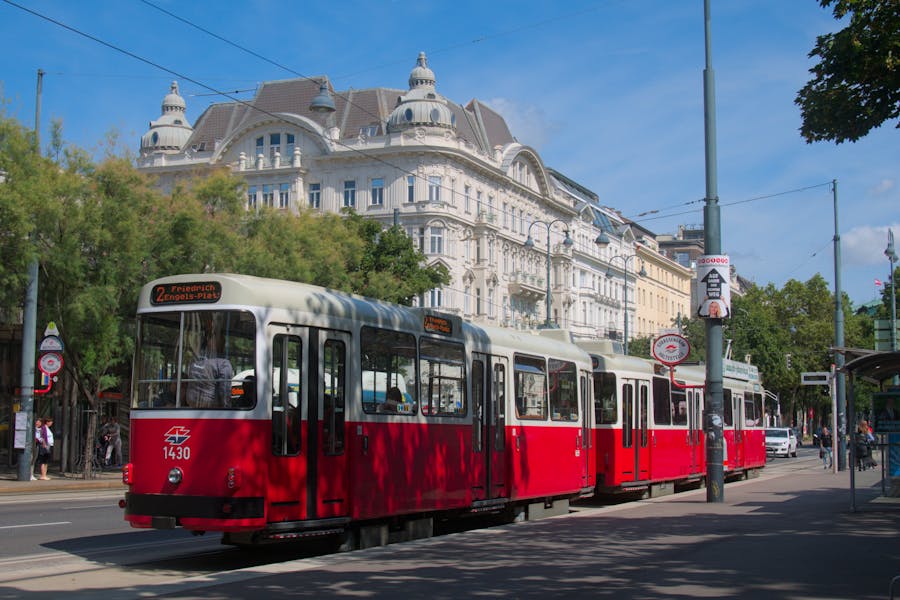
Getting around is easy and relatively cheap in both cities. Vienna’s public transit system is a bit more budget-friendly than Paris.
A single ride on the Vienna metro costs €2.40, while Paris charges €1.90. However, multi-day passes offer better value. A 72-hour pass in Vienna is about €17, compared to €29.40 for a similar pass in Paris.
Both cities have great bike-sharing programs too. Vienna’s system is slightly cheaper, with daily rentals starting at €1 compared to €5 in Paris.
Taxis are pricier in Paris, with a 5km ride costing around €15-20. The same trip in Vienna would be closer to €10-15.
Seasonal Considerations
Vienna and Paris offer unique experiences throughout the year. The weather and events in each city shape the best times to visit. Let’s look at what to expect in different seasons and when you might want to plan your trip.
Weather Patterns
Vienna’s weather can be quite different from Paris. Summers in Vienna are warm but not too hot. Temps usually stay in the 70s Fahrenheit. Paris gets a bit hotter, often hitting the 80s.
Vienna sees more sun in fall. It gets about 140 sunny hours in autumn. Paris only gets 127 hours then. Vienna also tends to be drier in October. It gets 1.6 inches of rain that month. Paris sees 2.2 inches.
Winters are cold in both cities. Vienna can get pretty chilly, with lots of snow. Paris is milder but rainier in winter. Spring brings mild temps and blooming flowers to both spots.
Best Time to Visit
Spring and fall are great times to visit either city. The weather is nice and there are fewer tourists.
April to May is perfect for seeing flowers bloom. You’ll catch tulips in Paris and lilacs in Vienna. September and October have golden light and harvest festivals.
Summer is peak tourist season. It’s warm and lively, but expect crowds. Winter can be magical with Christmas markets. Vienna’s are especially famous. Just pack warm clothes!
Try to time your visit with fun events. Vienna has classical concerts year-round. Paris lights up for Bastille Day in July.
Culinary Traditions and Offerings
Vienna and Paris both offer incredible food scenes that will make your taste buds dance. Each city has its own unique flavors and specialties that reflect their rich culinary heritage.
Signature Dishes
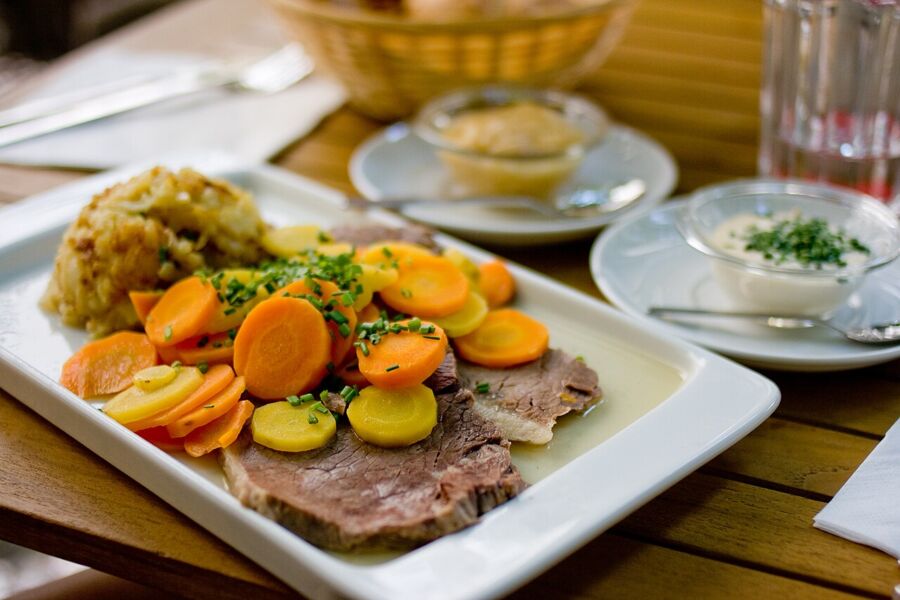
Vienna’s cuisine is hearty and comforting. Wiener Schnitzel is the star of the show – a thin, breaded veal cutlet that’s crispy on the outside and tender inside. It’s often served with potato salad or lingonberry jam. Another must-try is Tafelspitz, boiled beef in broth. For dessert, indulge in a slice of Sachertorte, a decadent chocolate cake.
Paris is all about elegance and flavor. Croissants and baguettes are breakfast staples. For lunch, try a croque-monsieur (ham and cheese sandwich) or classic French onion soup. Dinner might feature coq au vin (chicken in wine sauce) or beef bourguignon. Don’t forget to sample some escargot (snails) if you’re feeling adventurous!
Local Wine and Beverages
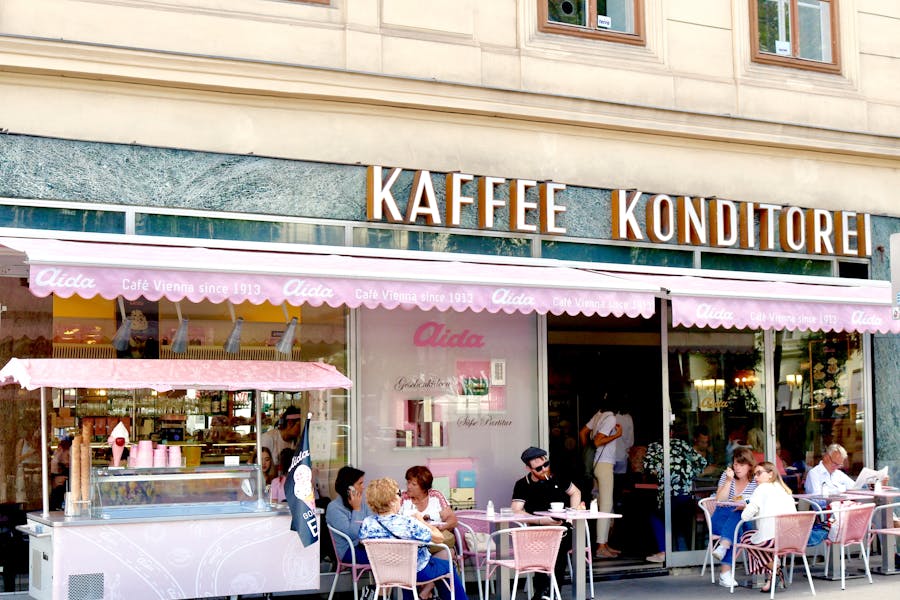
Vienna takes pride in its wine culture. The city is surrounded by vineyards producing crisp white wines like Grüner Veltliner. In the fall, you can try Sturm – a partially fermented grape juice that’s sweet and fizzy. Coffee houses are a big deal here too. Order a Melange (similar to a cappuccino) and sip it slowly while people-watching.
Paris is synonymous with wine. From bold Bordeaux reds to crisp Chablis whites, there’s something for every palate. Don’t miss out on Champagne – it’s the real deal here! For a non-alcoholic treat, try a chocolat chaud (hot chocolate) at a cozy café. It’s thick, rich, and perfect for chilly days.
Accessibility and Transportation
Getting around Vienna and Paris can be quite different experiences. Both cities have their strengths when it comes to public transit and ease of travel, but there are some key distinctions to keep in mind.
Metro System and Public Transit
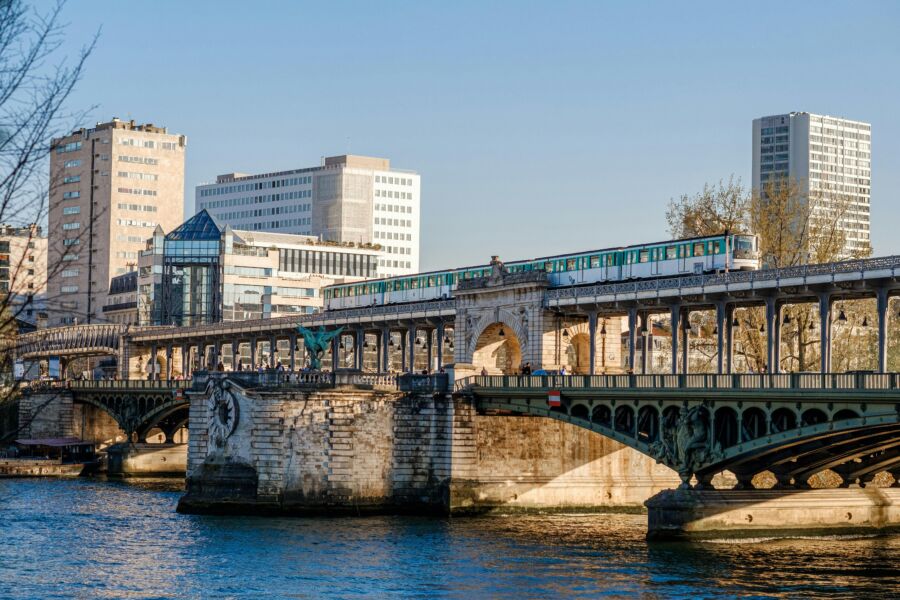
Vienna’s public transportation is top-notch. The city boasts an extensive network of buses, trams, and an efficient U-Bahn (subway) system. It’s clean, punctual, and easy to navigate. The Vienna City Card gives you unlimited rides and discounts at attractions.
Paris has the famous Metro, one of the busiest subway systems in Europe. It’s comprehensive and can get you almost anywhere in the city. But it can be crowded and confusing for first-timers. The RER trains connect to suburbs and airports. Buses and trams complement the network.
Both cities have bike-sharing programs. Vienna’s system is called Citybike, while Paris has Vélib’. These are great for short trips and sightseeing.
Convenience for Travelers
Vienna shines when it comes to accessibility. Many stations have elevators and ramps. The trams are low-floor, making them easy to board. Audio announcements and digital displays help riders stay informed.
Paris lags a bit in this area. Only about 1 in 5 Metro stations are fully accessible. This can be challenging for travelers with mobility issues or heavy luggage. Buses are more accessible, but they’re slower than the Metro.
Taxis and ride-sharing services are available in both cities. In Vienna, you’ll find them at designated stands or by hailing on the street. Paris has similar options, plus car rental choices for those wanting more independence.
Travel Style and Personal Preferences
Vienna and Paris offer different experiences for travelers. Your choice depends on what you like to do and how you prefer to explore new places. Let’s look at some key factors to consider.
Solo vs Group Travel
Vienna is great for solo travelers. The city is safe and easy to get around. You can explore museums, coffee shops, and parks at your own pace. Many locals speak English, making it simple to ask for help.
Paris can be fun solo too, but it’s often better with friends or a partner. The romantic vibe is perfect for couples. Groups can enjoy long dinners and wine tastings together. Solo travelers might feel left out in this city of love.
Both cities have good public transport. Vienna’s system is a bit simpler to use. Paris can be crowded, which some solo travelers find overwhelming.
Leisure vs Adventure
Vienna is ideal for a laid-back trip. You can relax in grand palaces and listen to classical music. The city moves at a slower pace. It’s perfect if you want to unwind and soak up culture.
Paris offers more excitement. You can climb the Eiffel Tower or explore hidden streets in Montmartre. The city never sleeps, with lots of nightlife options. It’s busier and more crowded than Vienna.
Both cities have great food scenes. Vienna is known for its cafes and pastries. Paris is famous for its haute cuisine and wine bars. Choose Vienna for a chill vacation. Pick Paris if you want more action and variety.
Nearby Attractions and Day Trips
Vienna and Paris both offer amazing options for exploring beyond the city limits. Each city serves as a great base for venturing out to charming towns, historic sites, and natural wonders.
Excursions from Vienna
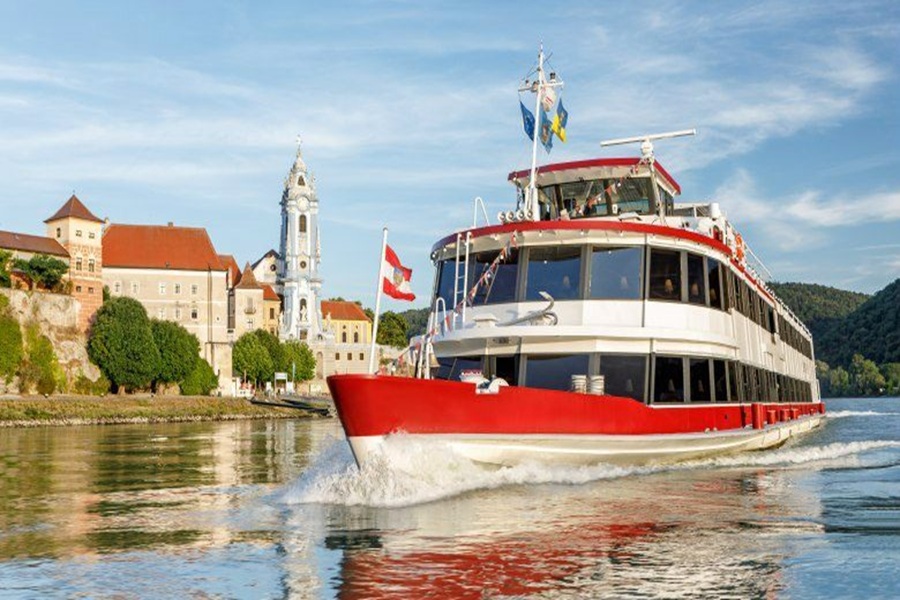
Vienna’s central location makes it perfect for day trips. The Vienna Woods, just outside the city, offer hiking trails and quaint villages. Visitors can take a boat ride on the Danube to Wachau Valley, known for its vineyards and apricot orchards.
Bratislava, Slovakia’s capital, is only an hour away by train or boat. It’s a great spot to explore medieval architecture and try Slovak cuisine.
For a taste of Hungarian culture, Budapest is about 2.5 hours by train from Vienna. Its thermal baths, ruin bars, and stunning parliament building make it worth the trip.
Parisian Outskirts and Beyond
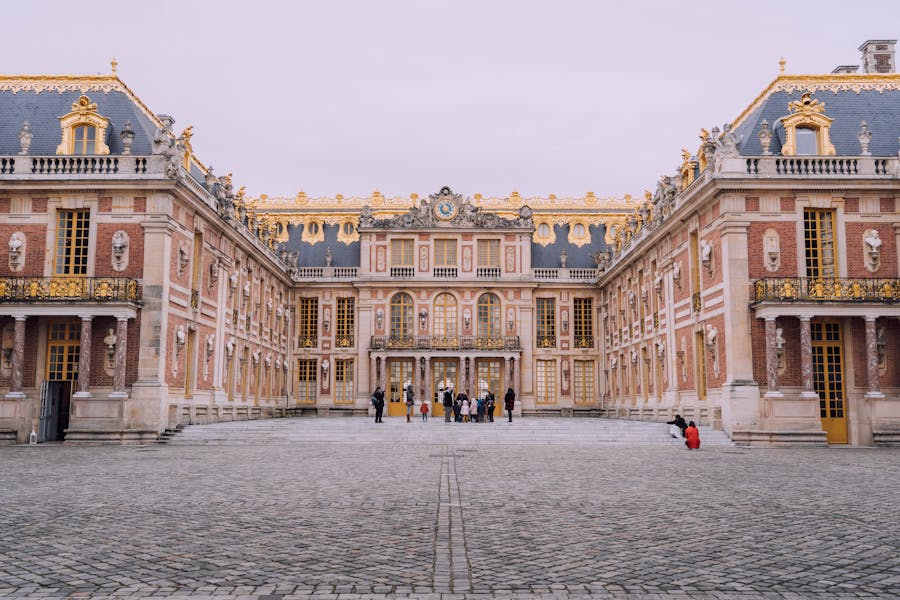
Paris has no shortage of nearby attractions. The Palace of Versailles, with its grand halls and beautiful gardens, is just 12 miles southwest of the city. It’s easy to reach by train and makes for a great half-day trip.
Giverny, home to Claude Monet’s house and gardens, is perfect for art lovers. It’s about an hour from Paris by train. Visitors can see the famous water lily pond that inspired many of Monet’s paintings.
For a magical experience, Disneyland Paris is only 20 miles east of the city. It’s easily reached by train and offers fun for all ages.
Mont Saint-Michel, a UNESCO World Heritage site, is farther but doable as a long day trip.
Frequently Asked Questions
Vienna and Paris offer distinct experiences for travelers, from cultural attractions to culinary delights. Let’s dive into some key differences between these two iconic European cities.
What are the distinctive cultural experiences that differentiate Vienna from Paris?
Vienna shines with its classical music scene and grand imperial palaces. You’ll find world-class opera houses and concert halls hosting Mozart and Strauss performances. Paris, on the other hand, is a hub for art lovers. The Louvre and Musée d’Orsay house incredible collections of paintings and sculptures.
How does the cost of living compare between Vienna and Paris for a traveler?
Paris tends to be pricier than Vienna for tourists. Hotel rooms and dining out cost more in the French capital. Vienna offers better value for money, especially when it comes to cultural activities. Concert tickets and museum entries are often cheaper in the Austrian city.
What architectural features set Vienna apart from Paris in terms of historical significance?
Vienna boasts stunning Baroque and Art Nouveau buildings. The Schönbrunn Palace and Belvedere are prime examples of Habsburg grandeur. Paris is famous for its Gothic churches like Notre-Dame and elegant Haussmann-style boulevards. The Eiffel Tower, of course, is a unique symbol of the city’s 19th-century innovation.
When considering a visit to either Vienna or Paris, which city offers more unique attractions?
Both cities have their own special charms. Vienna’s coffee house culture is unmatched, with elegant cafes serving delicious pastries. Paris has iconic landmarks like the Arc de Triomphe and Sacré-Cœur basilica. The Seine river cruises offer a magical way to see the city’s sights.
How do the culinary experiences in Vienna and Paris contrast for food enthusiasts?
Vienna is known for its hearty dishes like schnitzel and goulash. The city’s desserts, like Sachertorte, are world-famous. Paris is a paradise for food lovers, with its countless bistros and Michelin-starred restaurants. French cuisine, from croissants to coq au vin, is celebrated globally.
In terms of overall ambiance and local charm, how do Vienna and Paris differ for a first-time visitor?
Vienna feels more laid-back and traditional. The city’s parks and gardens offer peaceful retreats. On the other hand, Paris has a busier, more cosmopolitan vibe. Its charming neighborhoods like Montmartre have a romantic atmosphere that’s hard to beat. Both cities have their own unique character that leaves visitors enchanted.

